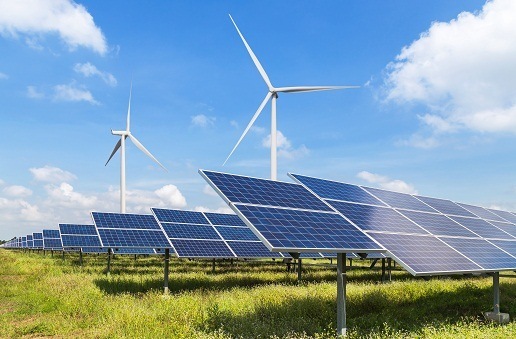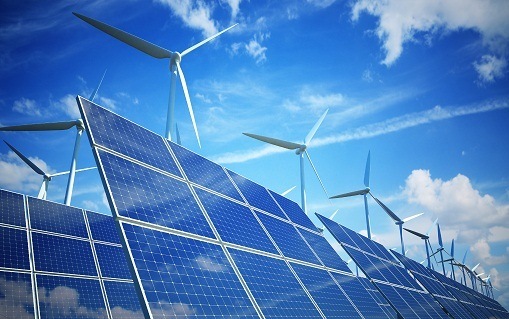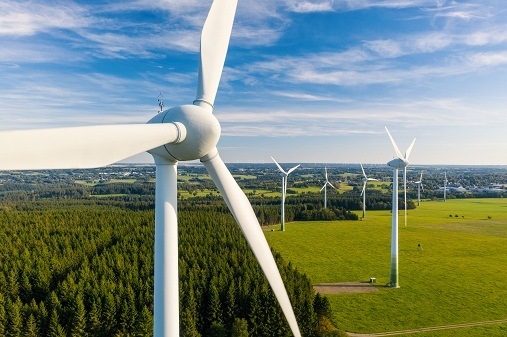An increasing number of homeowners in the USA switch to renewable energy resources to offer power for their own homes. The most practical renewable energy systems are photovoltaic (PV) solar power and small-scale windmills.
Both sources rely upon the forces of nature, though overall, solar panels are a terrific alternative for constant electricity production.
Furthermore, solar energy systems do not include moving components that need frequent maintenance as big moving wind turbines do.
We'll walk you through the crucial differences between solar and wind power that will help you figure out which clean energy choice makes sense to your residential energy needs.
Which is more efficient – solar power or wind power?
In the United States, many residents have historically chosen to utilize rooftop solar panels as a renewable energy choice to power their homes. A rising number of economic entities are driving toward huge wind farms.
The one advantage of wind over solar for your house is that wind turbines can produce power 24 hours a day as they aren't determined by sunlight.
A single wind turbine can produce the same amount of electricity in kWh as tens of thousands of solar panels.
Technically, wind power is much more productive than solar panels, but it isn't as simple to capitalize on wind resources to use the sun's energy.
The wind would be a good option for homeowners only if they have a huge land plot and reside in a place with a great deal of wind that can power the turbines.
Can you combine solar and wind energy?
Combining wind and solar energy provides an exceptional opportunity. This is only practical for those who have many acres of land, like a farm, practice energy efficiency, and are interested in being off-grid.
By integrating solar and wind energy production, you can be confident that your home will always be provided with electricity when you are off the grid.
When there isn't a great deal of sunlight, wind can help you to get your power. Conversely, if it is not windy, the sun provides power for your dwelling.
With hybrid systems such as this (and particularly if you go off-grid), it is reasonable to put in a solar battery for surplus energy storage.
This saved electricity can help replenish energy if your renewable sources don't generate enough electricity during times with less-than-optimal weather situations.
Combining solar and wind only makes sense for rural communities with loads of space to spare.
Solar energy pros and cons compared to wind power.
Solar panels are an excellent way to supply renewable energy but come with a couple of disadvantages, most notably their sunlight requirement to create electricity.
Solar Energy pros and cons compared to wind power.
Pros
Cons
Where does solar power work best?
Solar power is a term used to define the procedure for solar panels' internal solar cells turning sunlight into usable power.
Solar panels are a terrific option for your house because the number of panels you will need to supply all the energy production for your energy can easily fit in your roof.
The sun is among the most abundant energy sources, even though some areas are naturally exposed to more hours of sun than others.
Sunnier states like California and Texas allow solar panels to generate more power than states like Washington, cloudy more often.
The directions where the solar panels are set up may also increase or reduce efficiency. It's ideal for putting your solar panels facing south without a shade cover over the panels in the northern hemisphere.
While solar systems installed in almost any state can offer the amount of electricity your home requires, if you live in a cloudier state, staying connected to the grid or installing a backup battery will be able to help you run on clean power daily.
Wind energy pros and cons when compared with solar power.
While wind energy provides terrific potential on the utility-scale, there are several downsides.
Wind Power pros and cons when compared with solar energy.
Pros
Cons
Where does wind power work best?
Wind turbines absorb the wind's energy, which powers a generator inside the turbine, and turns that energy into power.
The wind is not always accessible, but it does have a small advantage over solar as it can produce electricity at night when the wind blows.
The efficacy of wind power is measured by the actual number of kinetic energy that is converted – that means when the wind strikes the turbine, the turbine moves to make energy.
Most wind turbines can transform roughly half of the wind striking them into electric power, with a higher conversion rate for offshore wind turbines due to higher wind speeds.
When contemplating using wind turbines, geography has become the most important element.
Wind systems require environments that are almost bare of big windbreaks and buildings, so positioning them out in the sea, in the US great lakes, or at the Midwest makes the most sense.
Based on the most recent statistics from 2018, the US generated 275 million megawatt-hours of wind energy.
As a result of their windy environments, half of the power was created in Texas, Oklahoma, Iowa, and Kansas.
Wind power is gaining popularity throughout the USA and is starting to be integrated both offshore and onshore.
Which is less pricey in terms of cost per kWh?
Comparing the price per kWh of wind power vs. solar will determine which power source will save you the most money overall the lifetimes.
The more you pay each kWh, the less you will save on your electric bills, so let us see how every system stacks up.
Normally, A 5kW wind turbine of adequate quality will cost around $50,600 and create between 8,000-12,000 kWh each year.
Wind turbines are built to function for at least 25 years – however, their output signals by 1.6 percent every year.
Considering all these factors, the price per kilowatt hours of wind turbines is 20.3 cents.
To generate the same amount of electricity with solar, a 6kW solar system is essential and can produce between 6,000 and 10,000 kWh annually.
The average price of a 6kW solar panel system, following the federal tax credit, is $11,544, and the expected lifetime of a solar panel can also be 25 years. The typical solar panels degrade at a rate of .5 percent every year.
Based on these variables, over a solar panel's life, its price per kWh is 4.6 cents – making solar electricity more affordable than wind power.
Per kWh, solar panels are less expensive than wind turbines. Not only is solar a less costly way to create power, but solar costs less when it comes to long-term upkeep because wind turbines will require more maintenance because of their many moving parts, which are more prone to breaking.
Another key advantage of solar is that solar is more popular. It's much easier to locate solar contractors than wind turbine contractors.
Furthermore, solar panels have a much better guarantee, typically 25 years, whereas average wind turbine warranties are generally only 2-10 decades.
Solar vs. Wind Energy: Which is Ideal for a Homeowner?
Obviously, solar panels make the most sense because of the reduced cost to install and maintain them.
Both methods offer reasonably-priced, clean options to the escalating prices of fossil fuel energy, both environmentally and financially.
Renewable energy allows you to be responsible for your own energy generation and saves you money over the long term without creating pollution.
Future electrical grids will have both solar and wind, but the function of the end will mainly be utility-scale because setting up and maintaining a wind turbine isn't as financially functional as solar.
For homeowners looking for an affordable renewable energy option; solar panels remain the best alternative.
Key Takeaways
Solar panels would be the more practical alternative for homeowners, as wind turbines are too expensive and require more maintenance.
If you would like to be off-grid or have lots of land, combining wind and solar can make sense to supply consistent, clean, renewable energy 24/7.
Wind power has the maximum possible in areas with few structures to block the end, like in the Great Plains area, where they could offer consistent renewable power.




